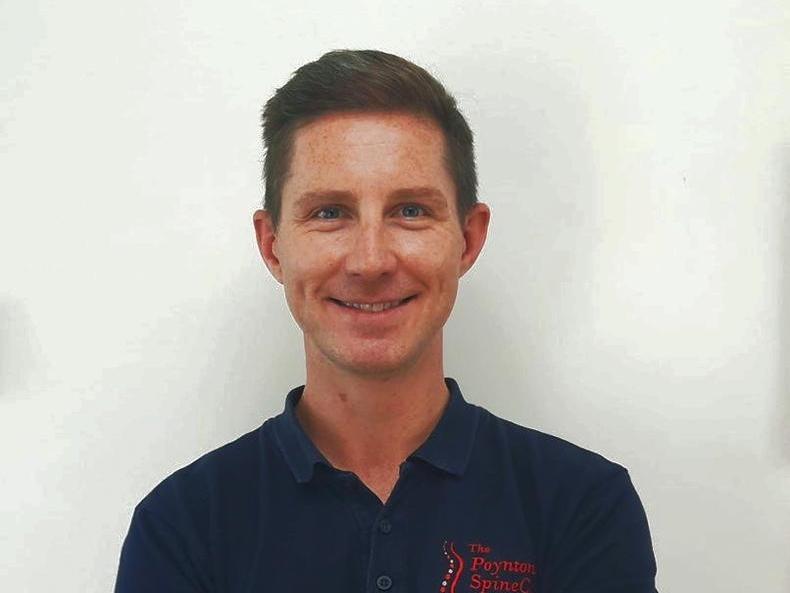The majority of us will experience back pain at some point. Indeed, advances in farming technology have reduced opportunities for physical activity, and this reduction has not helped our backs. Nearly all (98%) back pain is non-serious. However, if your pain doesn’t improve, what are your options?
Managing your pain
Uncontrolled back or leg pain is often a major reason why people look to surgery for a solution. There are lots of things you can do for pain.
Non-drug options for pain are preferred over medication, initially. Heat and movement exercise are advised as first line treatments.
A hot water bottle wrapped in a towel (this prevents a skin burn) can help soothe the painful area and relax muscles. Gentle movement exercise can help to ease muscle spasm and get your body moving normally again.
Most back pain recovers quickly and should be substantially better in six to 12 weeks. Persistent pain is not always related to ongoing injury. It can be due to structures in your back, nervous system and brain becoming sensitised to protect your back. Pain is often caused by a combination of factors.
Back and leg pain can also be due to nerve injury or degenerative changes in your spine
Massage, exercise, and cognitive behavioural therapy (CBT) are recommended over medication for managing persisting non-specific back pain.
Back and leg pain can also be due to nerve injury or degenerative changes in your spine. If non-drug options are not giving enough relief, your pharmacist or GP can advise the most appropriate medication. Pain injections may also be useful if oral medication (tablets taken by mouth) is not sufficient.
Pain management injections are used to administer pain medication to targeted areas. Nerve roots or small joints in your spine are some of the common sites for pain injections. Pain injections can sometimes help to identify your pain generators and guide what surgery you might benefit from.
Exercise therapy
Before you consider surgery, you should exhaust other avenues to see if they will help or resolve your issue. Often, surgeons will ask if you have tried physiotherapy. A chartered physiotherapist can provide a comprehensive assessment and treatment plan. When you are experiencing pain, there is a fine line between finding exercises that are not too much or are too little.
It is important to note that, often, physiotherapy is not a quick fix
A physiotherapist can prescribe appropriate exercises to help improve your joint mobility, muscular strength, and flexibility. They can offer advice and provide hands-on treatment that may relieve your pain. It is important to note that, often, physiotherapy is not a quick fix. It can take up to 12 weeks to see and feel the effects of a strengthening programme. Compliance with your exercise programme is vital if you want to try and resolve your issue and avoid surgery.
Exercise is a scientifically proven treatment for back pain. Low-impact exercise (like walking, cycling or swimming) has multiple health benefits and can reduce low back pain. You should aim to exercise for up to 30 minutes at a moderate intensity at least five days per week. No one exercise type is more effective in managing pain, so pick one you enjoy. Mat pilates and reformer pilates are a great additional exercise option for spine problems.
Thankfully, most spinal surgeries are elective
The decision to consider spinal surgery as a form of treatment for your pain is one that shouldn’t be taken lightly. Thankfully, most spinal surgeries are elective (done by choice rather than necessity) and scheduled after consultation with your doctor.
However, there are cases were surgery is required, particularly if you are experiencing weakness or neurological changes. If your pain is not resolving, your GP may refer you to an orthopaedic or neurosurgical specialist for review.
Surgery can be a very good option in some cases for managing spine related pain. However, it should only be considered once all other options have been considered.
Read more
Physio for Farmers: back yourself UP
Stephen O’Rourke: keep fit while farming
The majority of us will experience back pain at some point. Indeed, advances in farming technology have reduced opportunities for physical activity, and this reduction has not helped our backs. Nearly all (98%) back pain is non-serious. However, if your pain doesn’t improve, what are your options?
Managing your pain
Uncontrolled back or leg pain is often a major reason why people look to surgery for a solution. There are lots of things you can do for pain.
Non-drug options for pain are preferred over medication, initially. Heat and movement exercise are advised as first line treatments.
A hot water bottle wrapped in a towel (this prevents a skin burn) can help soothe the painful area and relax muscles. Gentle movement exercise can help to ease muscle spasm and get your body moving normally again.
Most back pain recovers quickly and should be substantially better in six to 12 weeks. Persistent pain is not always related to ongoing injury. It can be due to structures in your back, nervous system and brain becoming sensitised to protect your back. Pain is often caused by a combination of factors.
Back and leg pain can also be due to nerve injury or degenerative changes in your spine
Massage, exercise, and cognitive behavioural therapy (CBT) are recommended over medication for managing persisting non-specific back pain.
Back and leg pain can also be due to nerve injury or degenerative changes in your spine. If non-drug options are not giving enough relief, your pharmacist or GP can advise the most appropriate medication. Pain injections may also be useful if oral medication (tablets taken by mouth) is not sufficient.
Pain management injections are used to administer pain medication to targeted areas. Nerve roots or small joints in your spine are some of the common sites for pain injections. Pain injections can sometimes help to identify your pain generators and guide what surgery you might benefit from.
Exercise therapy
Before you consider surgery, you should exhaust other avenues to see if they will help or resolve your issue. Often, surgeons will ask if you have tried physiotherapy. A chartered physiotherapist can provide a comprehensive assessment and treatment plan. When you are experiencing pain, there is a fine line between finding exercises that are not too much or are too little.
It is important to note that, often, physiotherapy is not a quick fix
A physiotherapist can prescribe appropriate exercises to help improve your joint mobility, muscular strength, and flexibility. They can offer advice and provide hands-on treatment that may relieve your pain. It is important to note that, often, physiotherapy is not a quick fix. It can take up to 12 weeks to see and feel the effects of a strengthening programme. Compliance with your exercise programme is vital if you want to try and resolve your issue and avoid surgery.
Exercise is a scientifically proven treatment for back pain. Low-impact exercise (like walking, cycling or swimming) has multiple health benefits and can reduce low back pain. You should aim to exercise for up to 30 minutes at a moderate intensity at least five days per week. No one exercise type is more effective in managing pain, so pick one you enjoy. Mat pilates and reformer pilates are a great additional exercise option for spine problems.
Thankfully, most spinal surgeries are elective
The decision to consider spinal surgery as a form of treatment for your pain is one that shouldn’t be taken lightly. Thankfully, most spinal surgeries are elective (done by choice rather than necessity) and scheduled after consultation with your doctor.
However, there are cases were surgery is required, particularly if you are experiencing weakness or neurological changes. If your pain is not resolving, your GP may refer you to an orthopaedic or neurosurgical specialist for review.
Surgery can be a very good option in some cases for managing spine related pain. However, it should only be considered once all other options have been considered.
Read more
Physio for Farmers: back yourself UP
Stephen O’Rourke: keep fit while farming






 This is a subscriber-only article
This is a subscriber-only article










SHARING OPTIONS: